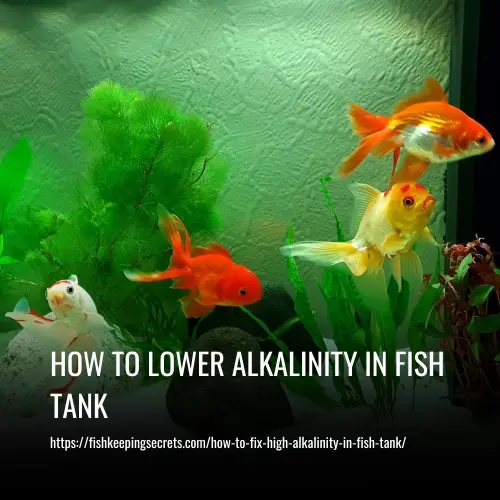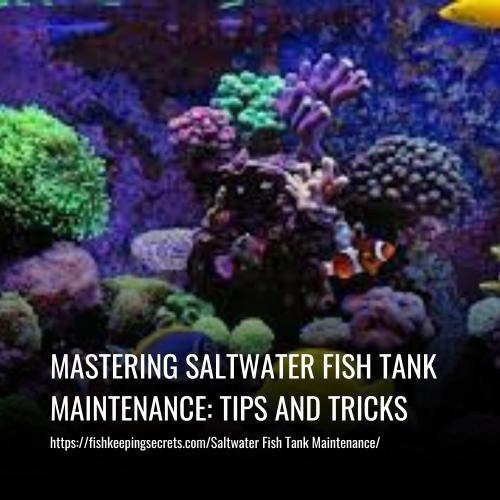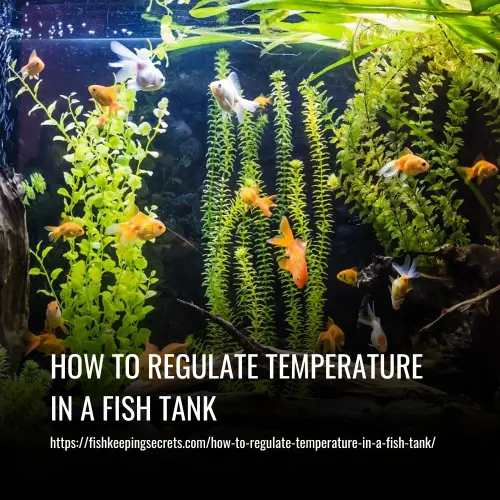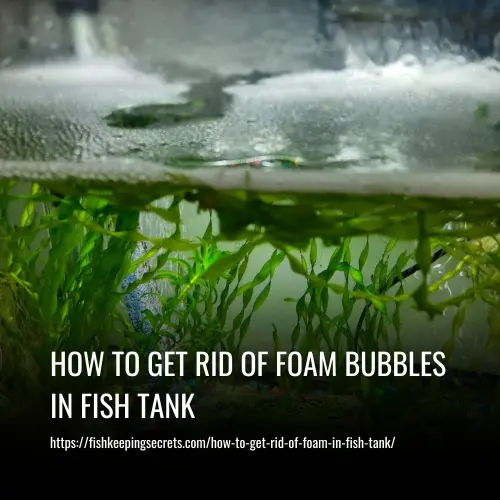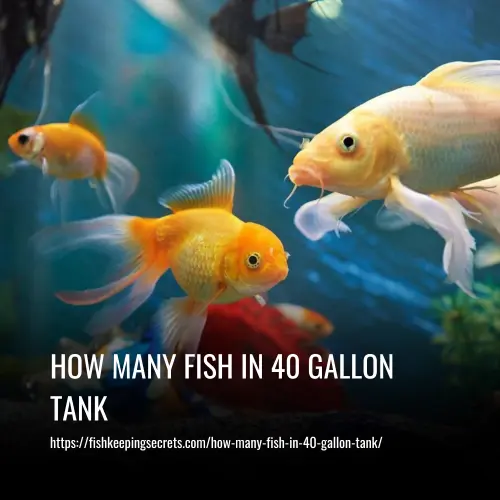How Often Should I Change My Fish Tank Filter
This post contains affiliate links. As an Amazon Associate, we earn from qualifying purchases.
It is recommended to change your fish tank filter once every 2-4 weeks. Neglecting to do so can be harmful to your fish.
The importance of keeping a clean and well-maintained fish tank cannot be emphasized enough. Not only is it visually appealing, but it also ensures the health and well-being of your aquatic pets. One of the most vital components of a fish tank is the filter, which cleans and purifies the water by removing excess waste, debris, and harmful chemicals.
However, like any other equipment, filters can become cluttered and clogged with solid waste and stop working efficiently. This is why it is crucial to change your fish tank filter regularly.
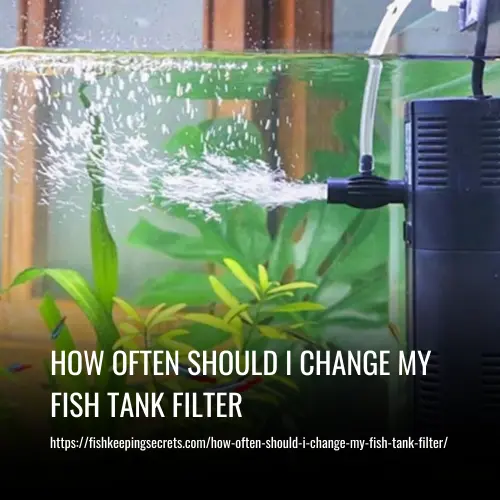
Factors To Consider When Deciding Filter Replacement
Fish keeping can be a therapeutic hobby, but it requires some upkeep to ensure that the fish and their environment are healthy. One essential component of a healthy fish tank is the filter. Filters remove harmful substances and debris from the water, ensuring that the water’s quality is optimal for the fish.
But how often should you change a fish tank filter? This article examines the factors to consider when deciding filter replacement.
1. Type Of Filter
Different types of filters have different lifespans. When deciding when to replace the filter, consider the filter’s type. Here are the key points to remember:
- Internal filters usually last for six months or more before requiring a replacement.
- External filters last longer than internal filters, usually around one year.
- Power filters, also known as hang-on-back filters, last six months to a year.
- Sponge filters are durable, lasting for two years or more.
2. Size Of Filter
The filter’s size also affects when it needs to be changed. Larger filters can handle more waste and debris, so you can change them less frequently than smaller filters. Here are the key points to consider:
- An adequate size filter should circulate the water in the tank at least four times per hour.
- For small tanks, the filter should handle approximately 7.5% of the tank’s total volume. For example, in a 10-gallon tank, the filter should handle 0.75 gallons of water.
- For larger tanks, a canister filter may be necessary.
3. Fish Population And Type
The fish living in the tank determine how much waste and debris the filter needs to handle. A crowded tank will generate more waste than a sparsely populated one. Different types of fish also produce different amounts of waste. Here are the key points to remember:
- A general rule of thumb is to allocate one gallon of water per inch of fish length.
- Fish that produce a lot of waste, like goldfish and cichlids, will require more frequent filter changes.
- Tanks with many carnivorous fish will also require more frequent filter changes.
4. Tank Size
The tank’s size also affects the frequency of filter changes. Larger tanks require a larger filter, which can handle more waste. Here are the key points to remember:
- The larger the tank, the larger the filter should be.
- Larger tanks can go longer between filter changes.
5. Feeding Habits Of The Fish
In addition to the number and type of fish, their feeding habits determine how much waste the filter needs to handle. Overfeeding can quickly lead to a clogged filter. Here are the key points to remember:
- A general rule of thumb is to feed the fish only what they can eat in two to three minutes.
- Fish should be fed no more than twice a day to prevent overfeeding and clogging the filter.
- If you have a lot of fish, you may need to split their feedings into smaller portions throughout the day.
It’s difficult to determine an exact timeline for replacing a fish tank filter. Several factors, including the size of the filter, the type of filter, the number and type of fish, the tank’s size, and the fish’s feeding habits, impact when the filter needs to be changed.
As a general rule, it’s best to monitor the filter’s effectiveness and replace it when necessary. By adhering to these guidelines, you can ensure that your fish’s environment remains clean, healthy, and thriving.
Signs That Your Filter Needs Replacement
If you are an aquarium enthusiast, you know how important it is to maintain a healthy and clean environment for your fish. One of the critical components of any aquarium set-up is the filter. The filter’s primary function is to keep the water clean and free from any harmful bacteria or debris that may endanger the fish’s well-being.
However, it’s crucial to know when it’s time to replace your filter. In this blog post, we will explore the different signs that indicate your filter needs replacement.
1. Decreased Water Flow
One of the most common signs that your filter needs replacement is decreased water flow. Keep an eye on the water flow rate in your tank. If you notice that the flow has slowed down or decreased significantly, your filter may not be functioning correctly, and it may be time for a replacement.
This can happen due to clogging, wear and tear, or damage to the filter’s motor.
2. Excessive Noise
Your filter may make some noise, but an excessive or unusual noise is an indication that your filter is not working correctly. If you notice a loud, grinding, or whirring sound coming from your filter, it’s time to replace it.
3. Water Discoloration
One of the first signs of a failing filter is the water’s discoloration. If you notice that the water in your tank is cloudy or has a greenish tint, it’s could be an indication that your filter is not cleaning the water effectively.
Discoloration can occur due to build-up or accumulation of harmful bacteria or other pollutants.
4. Accumulation Of Debris
Your filter’s primary job is to filter out any debris that may endanger the fish’s health. If you notice an accumulation of debris around your tank or in your filter system, there is a high chance that your filter is not functioning correctly.
A dirty or clogged filter can lead to bacterial growth, which can be detrimental to the health of your fish.
5. Fish Showing Signs Of Stress Or Illness
The health of your fish can be an excellent indicator of your filter’s functioning. If you notice your fish showing signs of stress or illness, it could be a sign of a failing filter. Look for signs like unusual swimming behavior, lethargy, or loss of appetite.
These can be markers of an unhealthy environment caused by poor water quality.
Proper maintenance of your aquarium filter is crucial for the health and well-being of your fish. Pay attention to the signs mentioned above, and you’ll be able to determine when it’s time to replace your filter. Remember that a healthy and clean environment is essential for keeping your fish happy and thriving.
Frequency Of Replacement Depending On Filter Type
How often should i change my fish tank filter – frequency of replacement depending on filter type
Keeping your fish tank filter up-to-date is one of the most important factors for the health of your fish. But how often should you change it? The answer depends on a few factors, with filter type being the most important.
In this post, we’ll delve into the specifics of each filter type to help ensure your fish tank stays in top shape.
1. Internal Filters
Internal filters, also known as submersible filters, are ideal for small tanks and tanks with low to medium-sized fish. Generally, internal filters are cheap and easy to install. Moreover, internal filters have a simple maintenance process, which makes them the ideal choice for novice aquarium owners.
When it comes to internal filters, it is recommended that you replace the media every month for optimum performance. Replacing the entire filter system is not necessary. You only need to replace the filter media, which is known to lose its bacteria population over time.
2. External Filters
External filters, as the name suggests, are placed outside the tank and require a bit of installation. However, they provide you a greater control over the aquarium’s cleanliness. In addition, external filters have a higher water flow rate compared to internal filters, making them ideal for large tanks with more fish.
When it comes to changing the filter media for external filters, it’s best to follow the manufacturer’s instructions. That being said, it is generally recommended to replace the filter media every two to four weeks.
3. Power Filters
Power filters, also known as hang-on-back filters (hob), are another popular type of aquarium filter that are typically used with larger tanks. They are extremely efficient and equipped with various components like chemical, mechanical, and biological filters.
For optimal performance and longevity, it is recommended that power filter cartridges are replaced every month. However, similar to internal filters, you don’t need to replace the entire system – only the cartridge. Keep in mind that you only need to change the cartridge if it’s visibly dirty or fully exhausted.
4. Sponge Filters
Sponge filters are the most basic type of aquarium filter and often used as a secondary filter in the aquarium. They work by pumping water through a sponge, creating a breeding ground for beneficial bacteria that help to purify water.
Generally, sponge filters are used in breeding and grow-out tanks, quarantine tanks, and other similar setups.
Cleaning sponge filters on a regular basis is essential. It is best to clean the sponge filter at least once a month, depending on the amount of buildup. However, it is better to determine the appropriate time for cleaning by observing the sponge’s appearance and smell.
It’s important to replace the filter media regularly, regardless of filter type, to ensure that it reaches its optimal performance and to keep the aquarium environment healthy for your fish. Following the recommended guidelines for each filter type is crucial to keep your fish happy and healthy.
Process Of Replacing Your Fish Tank Filter
Maintaining the cleanliness and condition of your fish tank is crucial for the health and well-being of your aquatic pets. One essential aspect of keeping a fish tank is to replace the filter periodically. But the question is, how often should you change it?
Importance Of Properly Maintaining The Filter
The filter is like the fish tank’s kidney, filtering out waste, chemicals, and impurities from the water. The main goal of filtration is to ensure that the water in your fish tank remains clear, safe, and healthy for your fish to swim in.
Replacing the filter regularly can help ensure that your fish tank stays clean, and your fish remain healthy. Failure to replace the filter can lead to the accumulation of debris, which can affect the quality of water in the tank and cause health problems for your fish over time.
Step-By-Step Process
Replacing your fish tank filter is not complicated; follow the steps below to get it done with ease:
- Firstly, turn off the filter and unplug it from the power source.
- Remove the existing filter cartridge and dispose of it.
- Rinse the filter with clean water to remove any remaining debris or dirt particles.
- Replace the old filter cartridge with a new one; ensure that it fits properly.
- Prime the new filter cartridge by soaking it in a cup of clean water for about 5 minutes.
- Reinstall the filter cartridge into the filter housing and ensure that it is in place.
- Reconnect the electrical connection and turn on the filter to test if it’s working correctly.
- Monitor the water flow for a few minutes to ensure that the filter is working correctly.
- Lastly, dispose of the old filter cartridge and rinse your hands clean.
By following these simple steps, you can ensure that your fish tank filter is correctly replaced and your fish are swimming in clean and healthy water. Remember to replace your filter cartridge every 2-4 weeks, depending on the type and size of your aquarium and the number of fish you have.
Proper maintenance will help prolong the life of your filter and ensure your fish’s well-being.
FAQs
To maintain a healthy environment for your fish, it’s recommended to replace the filter every 2-4 weeks. However, the frequency of filter change depends on the size of your tank, the number of fish, and the type of filter used.
Yes, you can clean the filter instead of replacing it. Rinse the filter media in tank water, rather than tap water, to avoid killing beneficial bacteria. Never replace the entire filter media at once as it can harm helpful bacteria and disrupt the nitrogen cycle.
If you don’t change your filter regularly, the filter media can become clogged with debris, causing the filter to work less efficiently. As a result, unwanted waste and chemicals can build up in your tank, leading to poor water quality and unhealthy conditions for your fish.
Conclusion
As we come to the end of this article, it is clear that changing your fish tank filter regularly is crucial for the health and well-being of your fish. While the answer to how often you should change your filter may vary depending on the size of your tank and the type of filter you have, it is generally recommended to change the filter every 4-6 weeks.
However, it is important to keep an eye on the filter and ensure that it is functioning properly. If you notice a decrease in water flow or a buildup of debris, it may be time to change your filter sooner.
Remember, a clean filter means clean and healthy water for your fish, so don’t neglect this important aspect of your aquarium maintenance routine. With proper care, your fish can thrive in their environment for years to come.

